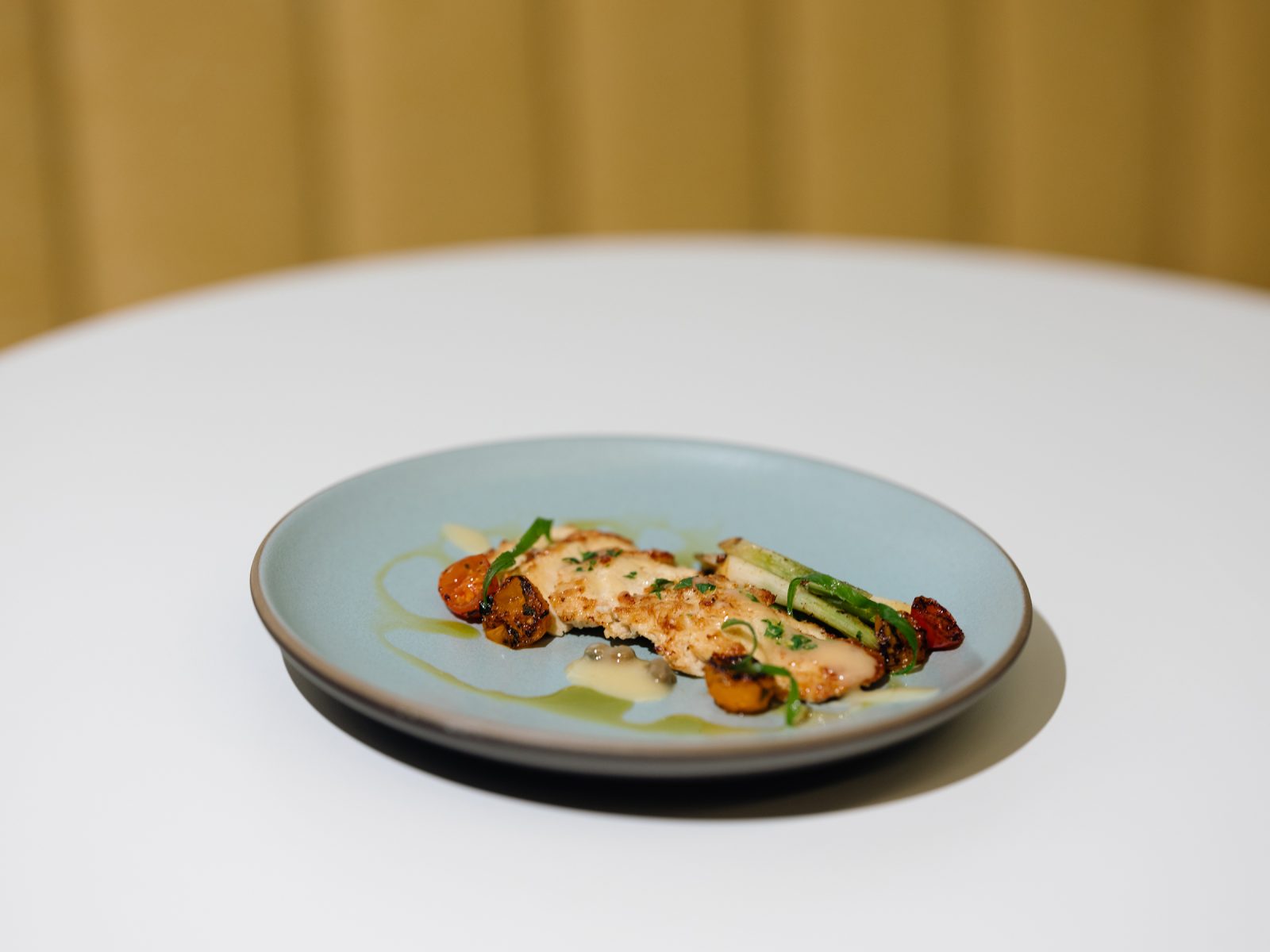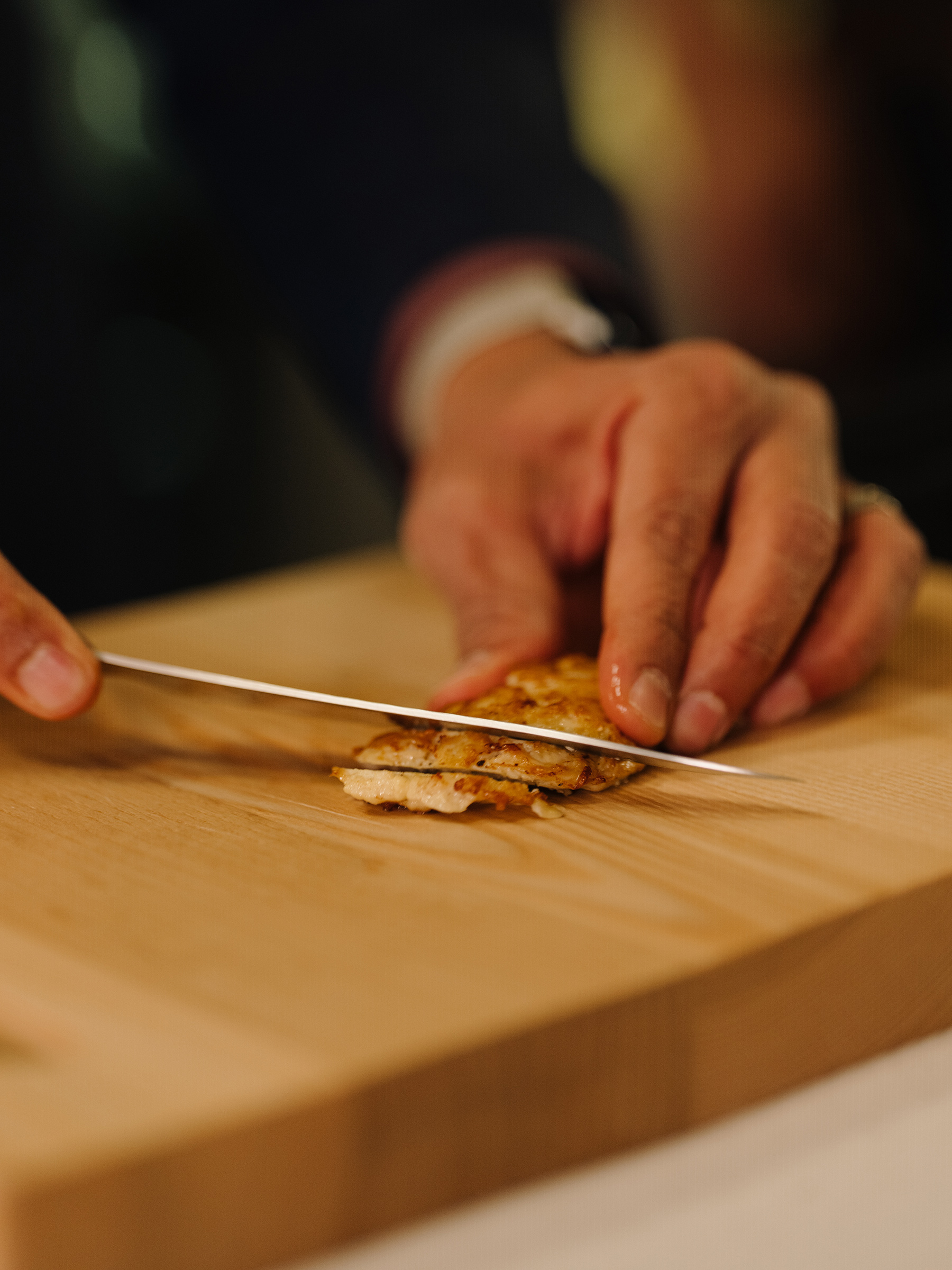
In a major first for the food industry, the U.S. Food and Drug Administration (FDA) has declared that a lab-grown chicken product developed by California food-tech startup Upside Foods is safe for human consumption, setting the stage for a new food revolution in which the world’s meat is grown in bioreactors instead of on factory farms.
The Nov. 16 ruling, which comes after a rigorous evaluation period, is the first and biggest of three hurdles that must be cleared before the Berkeley-based company can sell its “cultivated”—the industry’s preferred term—chicken in grocery stores and restaurants, but it likely paves the way for scores of similarly-made products, ranging from lab-grown beef to steaks, fois gras, and even cultivated mouse treats for cats.
“This is a watershed moment in the history of food,” said Dr. Uma Valeti, CEO and Founder of UPSIDE Foods, in a statement “We started UPSIDE amid a world full of skeptics, and today, we’ve made history again as the first company to receive a ‘No Questions’ letter from the FDA for cultivated meat. This milestone marks a major step towards a new era in meat production.”
More than 100 companies are working on various iterations of cultivated meat, but they all start from the same basic principle: stem cells are taken from the source animal (either via a biopsy from an adult animal, or from an in-vitro embryo) and are encouraged to multiply in a bioreactor filled with a nutrient-rich broth. Once they differentiate into fat, muscle, or structural cells they are moved to a larger bioreactor where they continue to grow until they can be harvested. The process can take anywhere from two to four weeks, depending on the final product. Ground chicken, for example, takes less time than a complex steak, created with the help of a 3-D bioprinter. Upside’s chicken filets fall somewhere in between. The industry is still relatively young—the world’s first cultivated meat product was launched in 2013 when Dutch startup Mosa Meat introduced its lab-grown beef burger to the world, with a $330,000 price tag—but companies are already eyeing supermarket shelves in the hopes that they will be first to market. Singapore is the only country that allows sales of cultivated meat, specifically chicken made by GOOD Meat, a division of the American food technology company Eat Just, Inc. But the U.S. market, with the highest per-capita consumption of meat in the world, is the ultimate goal for most companies.
Read More: The Cow That Could Feed the Planet
According to the FDA, Upside’s chicken will likely have company very soon. “We are already engaged in discussions with multiple firms about various types of food made from cultured animal cells, including food made from seafood cells,” the agency said in a written statement. “Our goal is to support innovation in food technologies while always maintaining as our priority the production of safe food. Human food made with cultured animal cells must meet the same stringent requirements, including safety requirements, as all other food.”
The next step for Upside, and any other companies following in its wake, is approval from the United States Department of Agriculture, which will inspect the safety of manufacturing facilities as well as the cleanliness of the meat production process, much as it would for conventionally grown chicken. Finally the meat itself will need to be inspected before it goes to market. Cultivated seafood companies, which are only regulated by the FDA and do not fall under USDA jurisdiction, could pass through the system even more quickly. “This is a critical milestone toward the future of food,” says Bruce Friedrich, president of the Good Food Institute, an advocacy organization promoting plant- and cell-based alternatives to animal products. “Cultivated meat, poultry and seafood will soon be available to consumers who desire their favorite foods made more sustainably.”
Read More: Exclusive: We Tasted The World’s First Cultivated Steak, No Cows Required
TIME toured Upside’s brand-new Berkeley facility in March to get a taste of what’s to come. The laboratory and test kitchen are housed in a mixed-use residential neighborhood. The building is most notable for vast windows that allow passers-by a glimpse onto the factory floor, where massive fermentation tanks are linked by a gleaming network of steel pipes and tubing designed to keep the nascent chicken filets fed with a steady flow of nutrients. “The windows are there to show that we have nothing to hide,” said Valeti as he led a tour through the manufacturing process. “Our process is clean, safe, and ethical—can you imagine a slaughterhouse allowing a tour like this? Would you even want to see that?”

The tour ended with a sample of Upside’s chicken filet, seared on a grill and served with a simple white wine and caper reduction sauce. The most surprising aspect was that there was no surprise—the chicken tasted just like chicken should, only more so. Most supermarket chickens, bred for quick growth, are bland, more a texture than a taste. Upside’s chicken stem cells were selected for flavor; their growth medium is designed to enhance both the taste and the consistency. The results are a firm, meaty bite reminiscent of old-fashioned farm breeds—a future food rooted firmly in the past. Now that Upside has the green light from the FDA, with USDA approval soon to follow, it will also be a present reality.
More Must-Reads From TIME
- Dua Lipa Manifested All of This
- Exclusive: Google Workers Revolt Over $1.2 Billion Contract With Israel
- Stop Looking for Your Forever Home
- The Sympathizer Counters 50 Years of Hollywood Vietnam War Narratives
- The Bliss of Seeing the Eclipse From Cleveland
- Hormonal Birth Control Doesn’t Deserve Its Bad Reputation
- The Best TV Shows to Watch on Peacock
- Want Weekly Recs on What to Watch, Read, and More? Sign Up for Worth Your Time
Contact us at letters@time.com